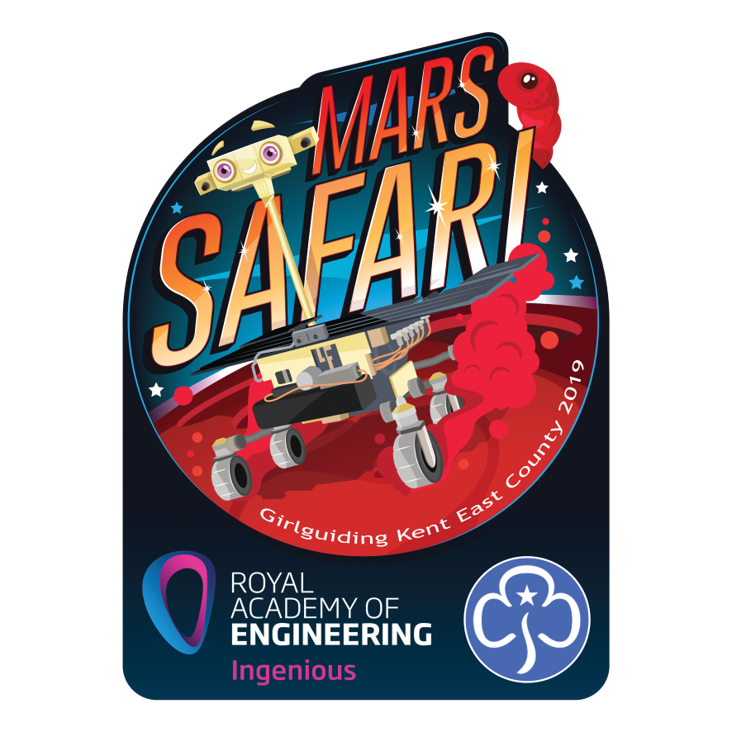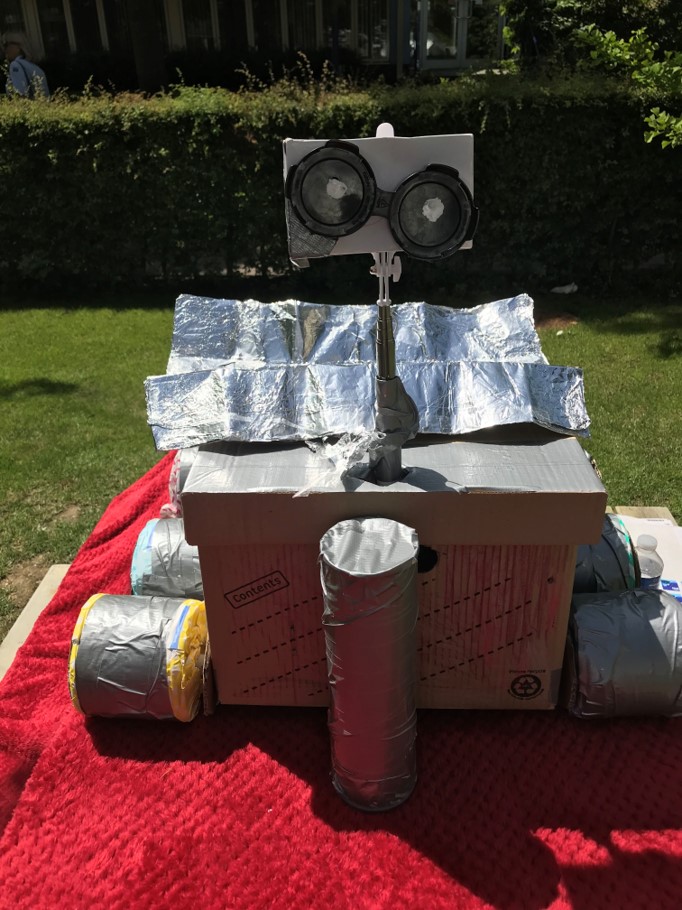Background
Spacefund started its journey in 2000 when co-founders Jo and Matt Fox decided to combine their love of space with their skills in teaching and theatre to create fun, interactive, exciting, and educational experiences to inspire young people about space.
The idea that became Mars Safari was hatched during a trip to Kenya when Jo visited a local school that was holding a special safari competition. With the playground transformed into a racecourse, the children had to make their own wooden cars to race against each other. Jo was so impressed that she set to work to recreate the idea while adding a STEM challenge with a space theme. Instead of a car the aim was to create a rover that could survive and navigate the harsh surface of Mars.
Launched in 2018 as part of the UK government’s Year of Engineering, Mars Safari also aimed to raise awareness of ExoMars and InSight – UK engineering projects that form keystones of the European Space Agency’s (ESA) exploration of Mars.
Building inspiration
Spacefund’s mission was to recruit and train engineers to inspire 800 girls through engineering and science, while giving the engineers an opportunity to share their expertise and enthusiasm and gain experience in public engagement. The project aimed to develop the engineers’ engagement and STEM communication skills and enable the girls to learn about engineering careers and future opportunities.
Working with a team of 24 engineers (11 female), 850 Girl Guides (from Rainbows to Rangers, aged 5 to 19) from 41 units in East Kent worked together in small teams to design, build and test large working models of Mars rovers. Spacefund reached out to deprived areas such as Swale and Thanet, where there are low levels of STEM engagement and fewer opportunities for similar activities.
Mars Safari comes to life
Supported by the visiting engineers, with support materials and videos from STEM luminaries such as female robot engineer Libby Jackson and ESA’s Rosalind Franklin’s rover mission video,Mars Safari took the Girl Guides on an exciting space mission. They were encouraged to use their creative, problem-solving, practical, research, and teamwork skills to gain a limited edition Mars Safari Girlguiding Kent East Challenge badge. The badge was divided into four sections: teamwork, engineering everywhere, engineers, and Mars and Beyond. One of the challenges was to ask an engineer at least three questions about their job and their motivations for becoming an engineer.
Once built, the participants brought their Mars rovers to one of the Mars Safari course challenge days at Canterbury Christchurch University. The fun-packed course featured 20 Mars-themed STEM stations designed to test their rovers. Challenge stations included drilling for Martian soil, using a green screen, growing plants on Mars, programming robots, collecting Mars rocks, using binary code, and doing solar panel experiments. The most popular tasks included ramp testing and drilling for a soil sample.
Recruiting and working with engineers
The Spacefund team used all the resources and contacts they had available to ensure that enough engineers were available to work on the project. They used the Girl Guides network to send flyers to families and received a good response, gathering 25% of their engineering team, including two Girl Guide leaders. They also worked with the local STEM hub and STEM Ambassadors programme, offering several public engagement training sessions with the engineers before they ran the Mars Safari event.
Having recruited engineers from a variety of specialisms, Spacefund’s project team wanted to make sure they felt prepared to lead the girls through their tasks and ensure the project was enjoyable to run and a good experience for them. With support and training from the team, even those who did not consider themselves to be space engineers were easily able to adapt their own knowledge to the project. One engineer taught the girls about LED lights while another created sound effects for the rovers.
Most of the engineers (92.4%) who took part felt Mars Safari had enhanced their interest and attitude to engagement work.
Spacefund included an extra training session specifically on working with girls in STEM projects, as encouraging them to feel included and inspired to picture themselves in an engineering role in their future career was an important aim of the project. The engineers were encouraged to use gender-neutral language when running their sessions and to use examples of female engineers when speaking to the girls.

Engineers of the future
One engineer who was also a Guide Leader repeated a smaller version of Mars Safari in her area
“As a Guide Leader and STEM Ambassador, I found it all interesting and have subsequently organised a district event based on this and it went down very well”
Girl Guide Leader
The most popular name badge choices for the Mars Safari day were:
- Engineer
- Robot engineer
- Chemical engineer
- Materials scientist
- Artist
- Space doctor
- Space nutritionist
- Space architect
When asked if the engineers would be interested in supporting Girl Guides in the future, a keen 92.4% agreed. During the sessions, the engineers built strong relationships with their units, with many engineers wanting to attend the same course challenge day so they could see the girls again and their finished Mars rovers.

Three tips for running an Ingenious project
- The simplest ideas can be the most effective
Jo and the team blended engineering learning and activities around the fun activity of building a Mars rover.
- Find creative ways to encourage engagement
Encouraging the girls to ask the engineers questions as part of their work for the Girl Guide badge improved engagement as the girls were able to find out more about the engineers’ real-life careers.
- Be prepared to be flexible
The original plan was for the older Girl Guides and Rangers to design and run the 20 stations on the Mars Safari course. However, most were keen to be involved and wanted to make their own rovers and take them on the challenge course. So the Mars Safari team worked with the STEM hub to recruit more than 50 STEM Ambassador volunteers to run the challenge course, allowing all the girls to take part in the activities. The STEM Ambassadors were a fantastic asset and helped to make the challenge days a success.
Next steps
After the project was complete, the Spacefund team made the instructions for building the Mars rover plus three other related activities into teaching materials for ESERO-UK, which can be accessed by all teachers to use for free. There are also plans to run futureMars Safari events with Girl Guides and primary schools.
